Kintaro: Crafting Fermentation Through Culinary Encounters
Feb 13,2025
Kintaro: Crafting Fermentation Through Culinary Encounters
Feb 13,2025
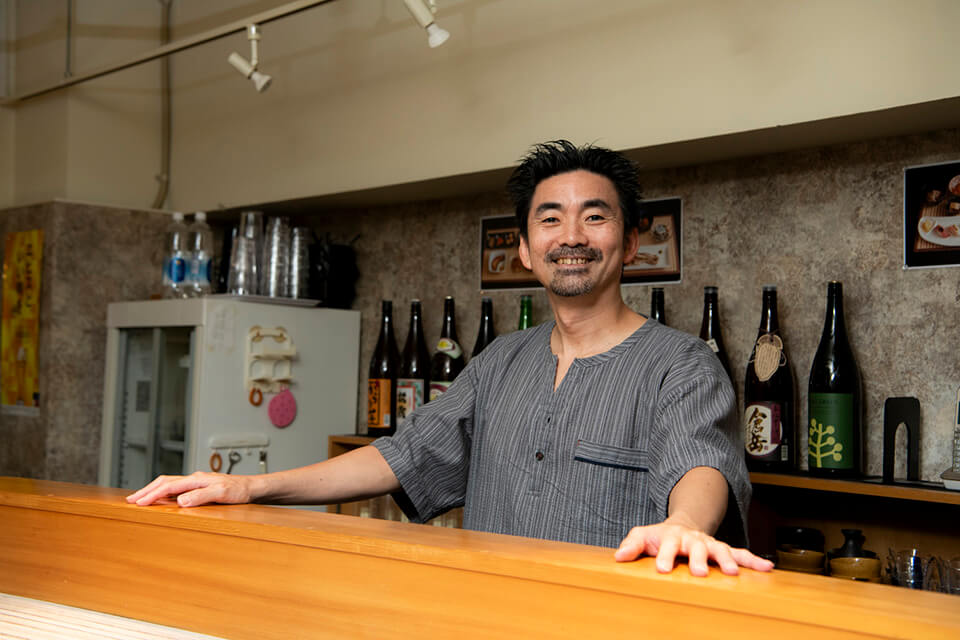

Kakuchi Sunao opened Kintaro, popular for its fermented kaiseki cuisine, 10 years ago. Part 1 of this article delved into the dishes he prepares using fermented seasonings, which are prized for how well they go with saké. This concluding part presents Kakuchi’s story about how he went from a sushi chef to opening a restaurant specializing in fermented kaiseki cuisine.

Kakuchi Sunao, the owner of Kintaro, spoke with us
Kakuchi Sunao gained experience as a sushi chef working at various establishments before he opened Kintaro. What led him to discover fermented foods and eventually open a restaurant featuring original dishes centered on fermentation?
We first asked him about his journey as a chef.
“Ever since I was a kid, I loved not only miso soup but also Nara-zuke pickles,” says Kakuchi.
The flavor of Nara-zuke is often too strong for most kids and its deliciousness is not fully appreciated until adulthood. But not for Kakuchi, who laughs as he recalls: “In fifth grade, I’d eat a whole bowl of rice with just a piece of Nara-zuke while repeating ‘This is so amazing.’ And my mom would say, ‘You don’t need any other side dishes. How lucky we are that we don’t have to spend much money on you.’”
His choice of ramen was miso ramen. Kakuchi, who counted kasu-zuke [vegetables or fish pickled in saké lees] and kasu-jiru [soup with a saké lees base] among his favorite foods as a boy, decided to become a sushi chef in grade six.
“A friend of my dad’s — an older woman — owned a sushi shop. He took me along to her shop one time. That’s when I became completely infatuated with the sushi chef working behind the counter. There was a glass case that had the sushi toppings, and behind it stood a chef with incredible knife skills. Watching how he worked, I thought, ‘Wow, that’s beautiful.’ She saw how I was mesmerized by the chef, so she said, ‘When you grow up, come train with us.’ From that moment on, my dream was to become a sushi chef in the future.”
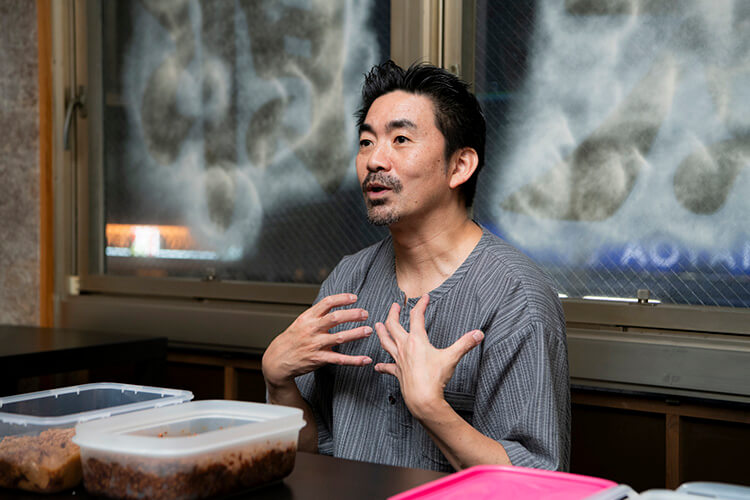
That experience while still in elementary school “hit me like a ton of bricks,” Kakuchi remembers. Born in Tokyo’s Kanda district, Kakuchi had no shortage of opportunities to see all kinds of talented and stylish chefs. But that’s precisely why he never entertained the idea of becoming an Italian or Chinese chef, going so far as writing “I will become a sushi chef” in his elementary school yearbook. Once he graduated from high school, he immediately took the first step toward fulfilling his dream. Indeed, he knocked on the door of the very sushi restaurant that had sparked his dream.
“There are loads of sushi shops, of course. But when it came time to start my apprenticeship, that particular shop was the one that came to mind. I hadn’t set foot in the shop since I was in elementary school, but the proprietress still remembered me. So I ended up training at that shop for eight years.”

After a comprehensive training as a sushi chef, Kakuchi sought to further hone his skills, working at all types of sushi restaurants, from high-end establishments to counter-only standing sushi bars.
“Some places required nothing but sheer speed, while others required meticulous service, like introducing yourself before starting to make sushi. Each shop had its own character. Plus, there was great variety in the side dishes they served.”
As he gained experience working at all these sushi shops, he realized that soy sauce and wasabi were not the only seasonings that went well with fish.
“There was one shop I worked at that served dishes like namero [fish minced and mixed with miso and other seasonings] and saikyo-yaki [fish marinated in miso sauce and then grilled] alongside sushi. That’s where I discovered how delicious the combination of fish and miso is. It was quite a novel experience for me, and it got me to start experimenting with combinations at home. I’d always loved miso, so I tried making salmon namero and combining the red meat of tuna with miso, which I realized was an incredible pairing. As I read and researched more, I even found some regional dishes like tuna marinated in miso. What all this taught me was fish can be eaten and enjoyed in a multitude of different ways.”
As he worked at different sushi shops, Kakuchi dreamed of opening his own restaurant where he would have more freedom to serve dishes of his own creation. Seeking even more experience, he began working at other types of restaurants.
“I had only worked with fish until that point, so I wanted to learn more about meat and vegetables. Meat marinated in miso is delicious, but it can also be marinated in koji malt and saké lees. I also wanted to know more about cheese and tofu.”
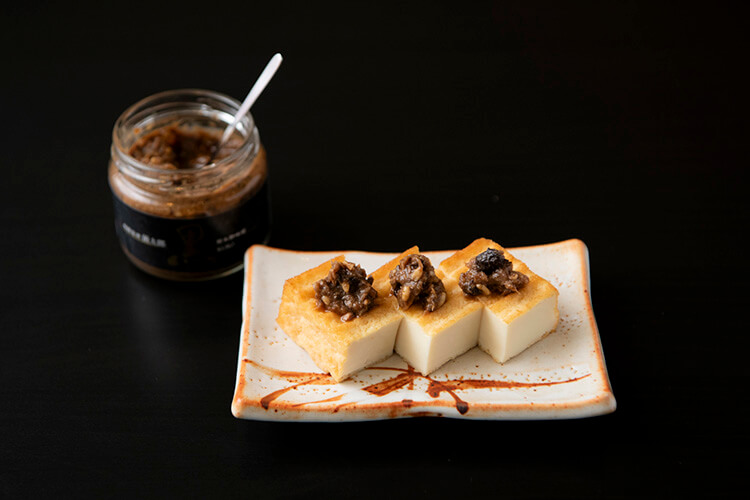
Now at Kintaro, Kakuchi prides himself on a-la-carte items featuring fermented foods
Having long been fond of fermented foods, Kakuchi became interested in experimenting with combinations of food seasoned with miso and many other types of fermented foods. Once entrusted by an owner to develop an entire menu for a particular restaurant, Kakuchi began serving many of his original creations.
“Once I developed an eye for it, I started finding inspiring dishes everywhere. Ramen noodle shops, for instance, were a huge source of inspiration. Beyond the typical soy sauce ramen or miso ramen dishes, there were original ramen creations by chefs with French cuisine backgrounds and others with vibrant combinations of colorful vegetables. They were like works of art to me. Chefs were creating styles of ramen that were miles away from the Chinese-style noodles I grew up knowing. I thought, ‘If ramen can evolve like this, why not sushi?’ I found fermented foods from other countries fascinating as well. Seeing how yogurt is used in Bulgarian or Indian cuisine, I realized that the yogurt not only adds taste but also tenderizes the meat. These cuisines make skillful use of fermentation. This was incredibly compelling to me.”
By drawing inspiration from other types of cuisine, conceiving many original dishes, and directly observing customer reactions, Kakuchi says he gained a visceral understanding of the universal tastes everyone loves.
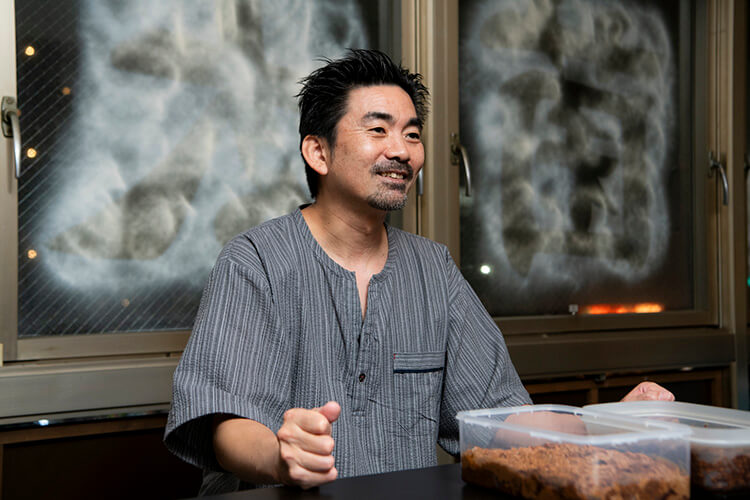
“When I worked at sushi restaurants, I thought only in terms of fish plus fermented foods. But I realized that what goes well with fish also tastes great with meat and vegetables and that many people enjoy these flavors. As I rediscovered the appeal of fermented foods, I began thinking, ‘These guys are the centerpieces.’ Miso isn’t a supporting actor — it’s the star. This insight was a huge confidence boost for me. It made me want to communicate this idea to more people.”
While studying the traditions of sushi and gaining a wide range of experience, Kakuchi came to realize the rich legacy of fermented foods and their excellent chemistry with all kinds of ingredients. Finally, in 2015, he opened Kintaro, a restaurant specializing in fermented kaiseki cuisine.
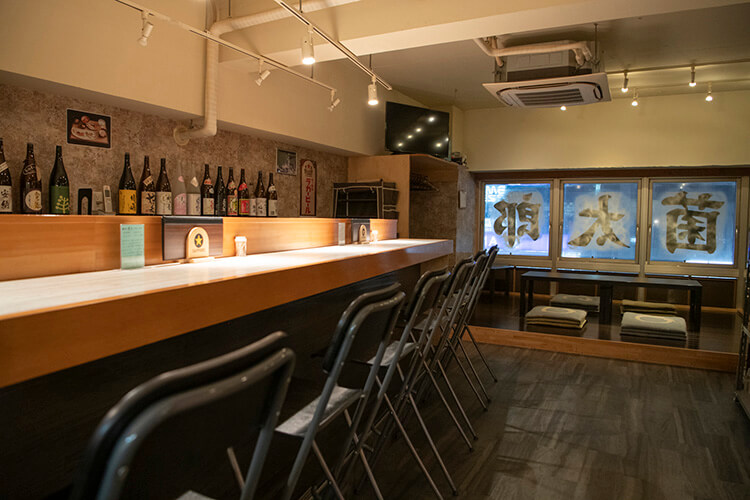
“Since I was a sushi chef, naturally, I still want to feature fish. On top of that, I want to serve a menu that showcases the full appeal of miso and many other types of fermented foods. This is how the concept for Kintaro was formed. Looking back now, I feel like I took the long path. When I opened ten years ago, not that many people really got fermentation and many associated the ‘kin’ in our name with harmful bacteria or mushrooms. Today, however, I get all kinds of customers coming in.”
One thing that Kakuchi is always crafting, drawing on his knowledge and innate experimental spirit, is miso snacks.
“Take, for example, this green chili miso that I use as a topping on tuna sushi. I made it on a whim, wondering what would happen if I combined green chilies I found at a market with miso. That’s the spirit in which I regularly come up with new miso snacks.
“The very first one I made was a miso snack with horse mackerel. I cooked the horse mackerel, added miso, and then broke it up into flakes. People loved it as a quick bite to go with saké.”

Green chili miso and tuna are a divine match, according to Kakuchi
Kakuchi has crafted many more miso snacks since that first horse mackerel dish. Using fish, shellfish, vegetables, and other ingredients, he has created more than 30 varieties.
“Many of our customers drink saké, so I started making these snacks for them. I couldn’t remember all the combinations of miso snacks I’d come up with, so I started writing them on this wall. [laughs] Some are one-offs, others I make repeatedly. Fish like horse mackerel, bonito, and mackerel are obviously delicious on rice, but they pair excellently with tofu too. I would say my biggest hits are probably Pacific saury and conger eel. The reaction to these from customers has been amazing. Something like eel liver makes for a bitter miso snack, but it’s perfect for nibbling while sipping saké. People enjoy it, while commenting on how delicious it is despite the bitterness. Miso also pairs well with things that have a slightly peculiar taste, such as sansho peppercorns or Korean perilla seeds. My regulars come in with expectations, asking ‘What type of miso did you make this time?’ or saying ‘This one’s a masterpiece’.”
“When you look at this wall, you can see the history of Kintaro and, above all, just how much I love miso,” Kakuchi says with a beaming smile.
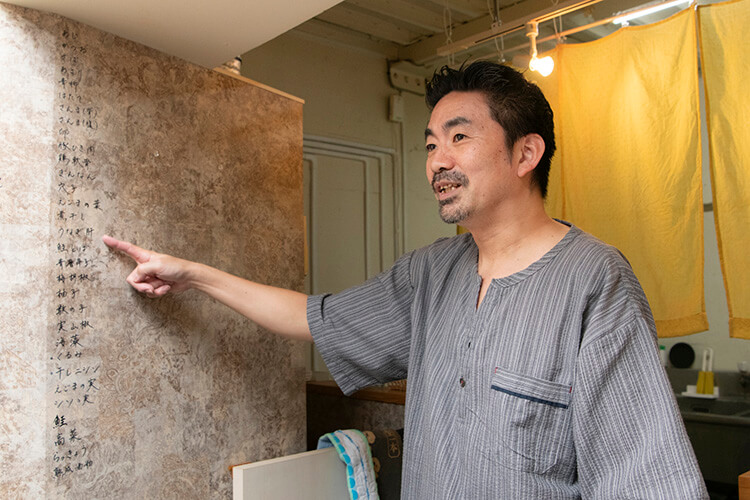
On the wall is a long list of ingredients Kakuchi has used in past miso snacks
“It’s like I’m experimenting every day. Figuring out what goes well together, or wondering how a certain ingredient will go with a certain miso snack. Trying all sorts of things is really exciting.”
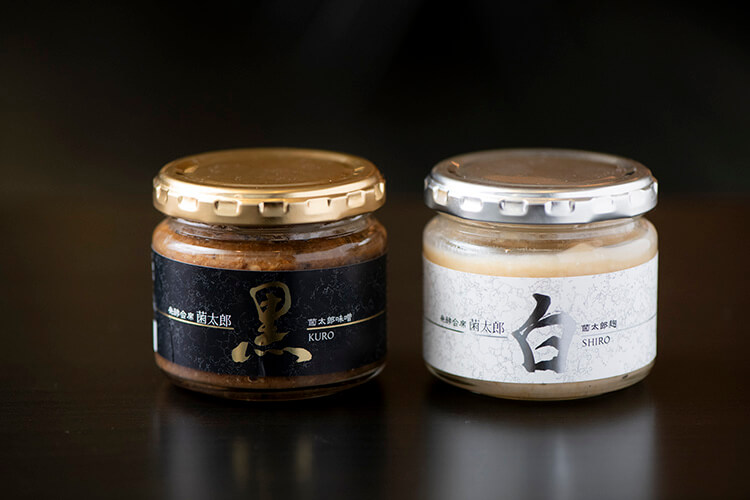
Kintaro sells jars of its smoked bonito miso at the shop and online. Kakuchi says he plans to introduce more variations soon.
Kakuchi continues his story.
“I hear people talk about how trendy fermentation is right now, but I’m not sure what they mean by trendy. In most cases, trends soon die out and are forgotten. But fermentation is different. Take koji for instance. It’s been with us since the Nara period (710 to 794). Most Japanese seasonings are based on koji, and without koji, neither saké nor shochu [a distilled alcohol] would exist. It’s no exaggeration to say that koji is a treasure, the very foundation of Japanese cuisine. That’s why I opened Kintaro, as a restaurant where I could take fermentation to the farthest extremes. And that’s also why I want to continue promoting the appeal of fermented foods to as many people as possible.”
